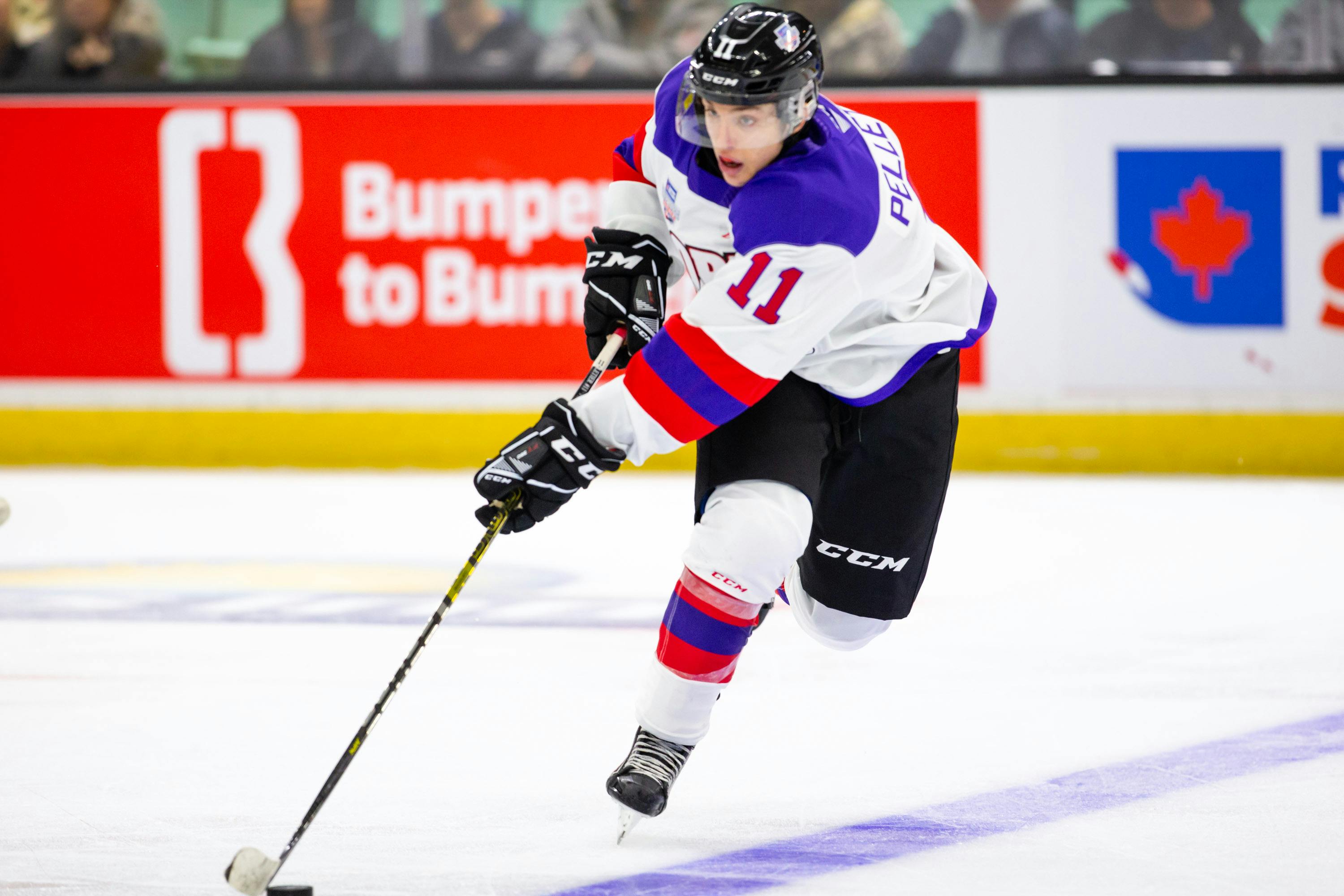Nation Sites
The Nation Network
FlamesNation has no direct affiliation to the Calgary Flames, Calgary Sports and Entertainment, NHL, or NHLPA
A closer look at Jakob Pelletier

Photo credit: Rob Wallator/CHL Images
Jul 6, 2019, 12:00 EDTUpdated: Jul 6, 2019, 11:56 EDT
With their first first round pick since 2017, many figured that the Flames would look to draft based on need. Perhaps if Spencer Knight fell far enough, they would pick up a goalie. If that didn’t happen, maybe they would address the need for righties, both at forward and on defence. Perhaps size would be something to look at. With a lot of the undisputed talent off the board by the time they would go up, the Flames had plenty of options available to them.
They went with Jakob Pelletier, a left winger with speed, intelligence, and an energetic style of play, but a player who only stands 5’9. Some may critique the pick based on what the Flames need versus what they drafted, but make no mistake: Pelletier is a solid draft pick.
The numbers
Games played | Goals | Assists | Points | Primary points | 5v5 points | 5v5 primary points | NHLe |
65 | 39 | 50 | 89 | 64 | 52 | 36 | 31.89 |
This slideshow requires JavaScript.
There’s a lot to like about Pelletier. He’s a consistent scorer, and scores in volumes: his longest scoring drought lasted two games and he recorded 30 multi-point games. Especially promising is that he s a very productive 5v5 scorer, nearly doubling up his powerplay totals. His impact on his team also deserves praise. He recorded a point on 34.36% of all Moncton goals, and was the primary contributor on 24.71% of goals. Again, he shone at 5v5, where he contributed to 32.77% of 5v5 goals, 22.69% being primary contributions.
Among all QMJHL first time eligible players, Pelletier stands nearly a head above the rest (at least stats wise). He led the league’s draft crop in points, points per game, NHLe, estimated points per 60 (4.06), and high danger shots (72). Based on these numbers, the Flames drafted the best QMJHL forward of the entire group.
But that’s also the only area you can find a negative to Pelletier’s totals. The QMJHL has a reputation (not entirely founded, but occasionally deserved) as the weakest of the three CHL leagues; a league where players inflate their stats but wind up underperforming at the NHL level. Although given his level of dominance relative to the rest of his competition, I don’t think this disqualifies Pelletier, but it’s something to be wary about.
Comparisons
Perhaps seeing how past QMJHLers did will ease some of that concern.
Of the players who scored similarly to Pelletier in their age 17 year, 48% of them went on to have NHL careers that lasted longer than 200 games, going on to score around 0.62 PPG for their careers (~50 points over 82 games). Although there’s a drop off from 48% to 20% when looking only at 5v5 numbers, that 0.62 PPG number remains constant. Players who matched Pelletier’s production in both all situations and 5v5 went on (or are on their way) to play over 200 games 55% of the time, again hitting around 0.6 PPG.
Two interesting comparables include Ales Hemsky and Jakub Voracek, who jumped from the QMJHL into the NHL after their draft + 1 years and went on to have very productive careers. These two probably represent Pelletier’s ceiling: very effective top six winger who can reliably produce year after year. It’s certainly not a definite trajectory, but if that’s what Pelletier can become, get very excited.
Final thoughts
Pelletier is, at the very least, a solid junior player who has a really good shot at becoming something great at the next level.
The next steps are the crucial ones. He’ll spend another season in the QMJHL (he might get the nine game cup of coffee, but that’s just speculation) and should hopefully improve on some already impressive numbers. If he can work some magic, it could be possible that he jumps to the NHL in time for the 2020-21 season.
Pelletier has been on an upward swing since he hit junior. If it continues, the Flames could have a player within a few short years.
Recent articles from christian tiberi
Breaking News
- FlamesNation Mailbag: Waiting for Santa with reader questions
- Flames injury news: positive signs for Martin Pospisil
- Recap: Martin Frk leads Wranglers to memorable Winter Wranglerfest win in more ways than one
- Scotia Place: a street-level look at December construction progress
- Beyond the Boxscore: Flames come out swinging in big 6-3 win over Golden Knights
